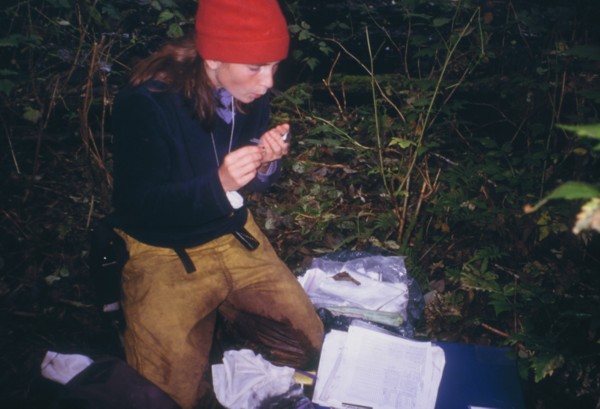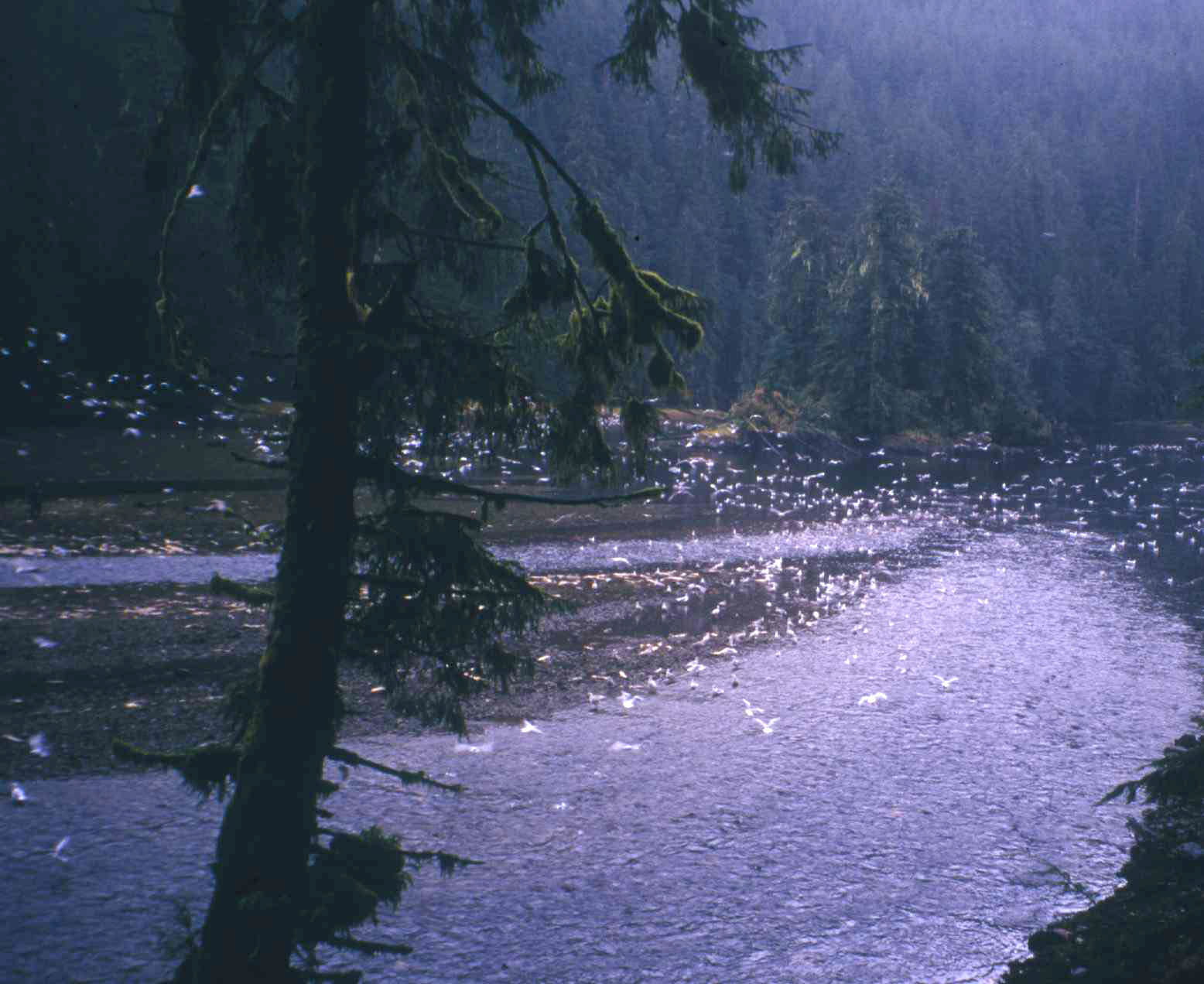 The effects of salmon-derived
nutrients
The effects of salmon-derived
nutrients
Salmon nutrients and Gulls Gulls (Larus spp.) congregate in the thousands on salmon streams throughout the Pacific Northwest every fall. Through quantifying the consumption of salmon and eggs by gulls, I intend to determine the relative importance of salmon nutrients to the diet of different gull species. |
To investigate the effects of salmon nutrients on songbird communities I conduct point-count surveys on salmon streams on the Central Coast of B.C. My study sites include two rivers which have waterfalls 1-2km upstream that block the passage of salmon, thus providing a within-watershed comparison between salmon-influenced and control areas. I compare the density and diversity of breeding songbirds adjacent to salmon-bearing to control reaches of the same stream. During late summer and fall, I mist-net birds to examine differences in songbird community structure across the waterfall barrier. I also collect feathers and feces from songbirds for stable isotope analysis of d15N and d13C, which enables me to trace salmon-derived nutrients in songbird tissues. |